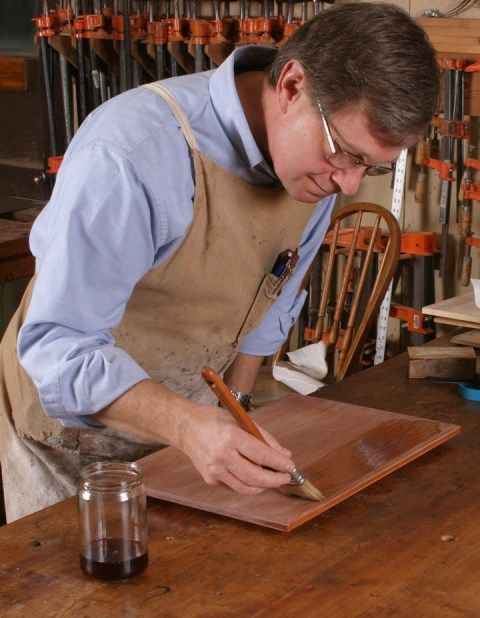
A successful topcoat relies on proper compatability and adhesion with the base coat.
I started my career in woodworking by refinishing furniture. The antique furniture craze was at a fevered pitch and I found that I got a chance to mess around with furniture by restoring the old clunkers, and I could actually make a pretty good living doing it. One of the first problems I encountered was finish compatiblity. Some finishes don’t adhere well to others, so it’s important to know what finish you’re dealing with before starting a refurbishing process. And removing a finish is a lot easier, and potentially less toxic, if you know what solvent will easily dissolve the old gunk.
One of the easiest finishes to discover is shellac. Simply dab some alcohol on a less-than-prominent area of the piece and wait for it to dissolve the finish. If it does, you have shellac.
Roland Johnson is teaching a class on finishing September 13 – 17 at the Northwest Woodworking Studio in Portland, Oregon.






















Comments
Roland,
I have to ask (and no offence meant) whether you will be teaching more than how to finish a flat panel with no moldings, corners, insides, etc.? While flat samples are a great way to practice they don't really give any insight into the techniques required to finish an actual project (i.e. one that isn't a flat board). Just curious.
Bob
BStev,
We will work on more than flat panels, although finishing flat panels is the best way to develop the basic techniques for brushing, wiping or spraying a finish.
Surface prep, coloring, finishing and glazing frame and panel cabinet doors will provide a lot of insight into working with moldings and surface texture and we'll practice applying finish to both horizontal and vertical surfaces. We also work with a variety of different wood species to get a feel for how they accept color, how to blend sap wood and how to tone-down or accentuate differences in grain patterns or color.
I also encourage my students to bring in a small (emphasis on small here) project of their own to work on.
Roland
Remember though, that NC lacquer will often dissolve in alcohol have it has aged for a couple of decades. I'm not sure that would affect much as far as refinishing, but it might give the erroneous impression that lots of mid-century factory furniture was finished with shellac when in fact nitrocellulose lacquer was almost universally used.
Log in or create an account to post a comment.
Sign up Log in